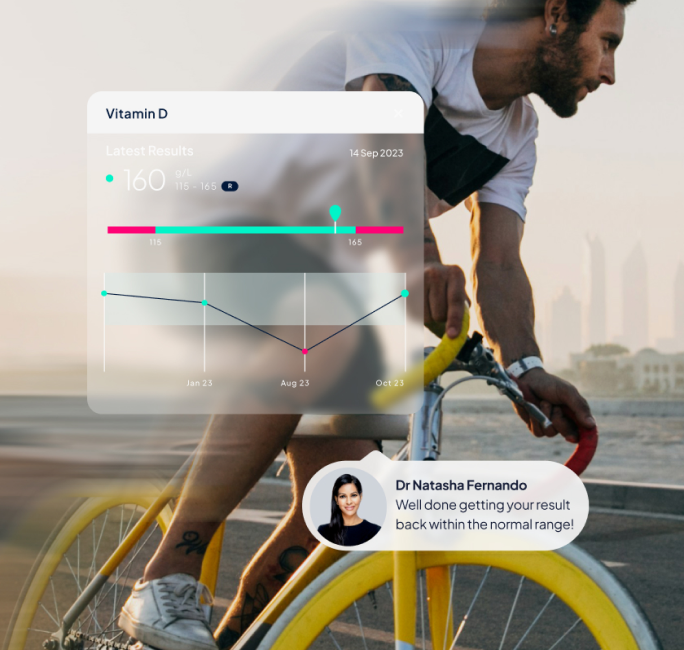Concerned about thalassaemia or unexplained anaemia? This test checks for haemoglobin variants and red blood cell abnormalities to help identify thalassaemia traits or thalassaemia major. Thalassaemia is more common in individuals from Mediterranean, South Asian, Middle Eastern, and African backgrounds.

Go beyond the numbers
Get ready to elevate your health understanding with a personalised doctor's report. Go beyond results and tap into expert insights tailored just for you.
- Actionable advice
- Expert support
- Tailored recommendations

How it works
You have the flexibility to choose what works best for you. Enjoy the comfort of having a friendly nurse visit your home for a quick blood draw, opt for a convenient visit to one of our nationwide partner clinics, or self-arrange a draw at a location that suits you.
Take control of your health with Medichecks – order your blood test today!

Track, improve, and monitor your health over time.
MyMedichecks is your personal online dashboard where you can view your results, access clear and simple explanations about individual health markers, monitor changes in your health, and securely store information about your medical history, lifestyle and vital statistics.
What's in the test?
Clotting status
Platelet count
Learn more
MPV
Learn more
Haematology
Haemoglobin A2
Learn more
Haemoglobin phenotype
Learn more
Haemoglobin A0
Learn more
Red blood cells
Haemoglobin
Learn more
Haematocrit
Learn more
Red cell count
Learn more
MCV
Learn more
MCH
Learn more
MCHC
Learn more
RDW
Learn more
White blood cells
White cell count
Learn more
Neutrophils
Learn more
Lymphocytes
Learn more
Monocytes
Learn more
Eosinophils
Learn more
Basophils
Learn more
How to prepare for your test
Test limitations
Reviews
FAQs
What is the main cause of thalassemia?
Thalassaemia is a hereditary disorder characterised by defective production of haemoglobin, which leads to decreased production and increased destruction of red blood cells.
Who can be a carrier of thalassemia?
Genes must be inherited from both parents to get thalassemia. If one gene is inherited, the person will be a carrier but will not have symptoms.
What is thalassaemia?
Thalassaemia is caused by inheriting a defective gene. There are two types of thalassaemia - alpha thalassaemia and beta thalassaemia (alpha thalassemia occurs most commonly in people from southeast Asia and China).




